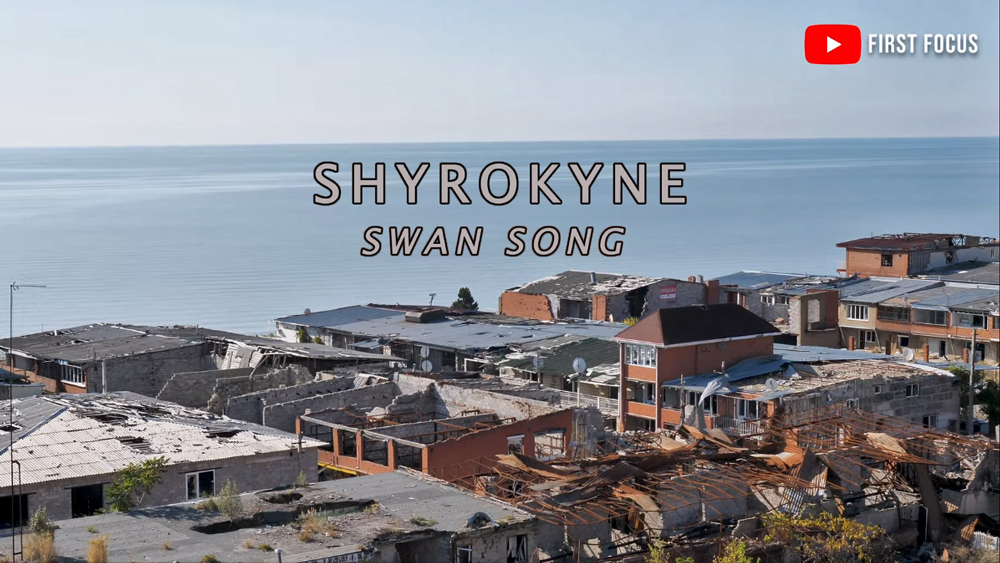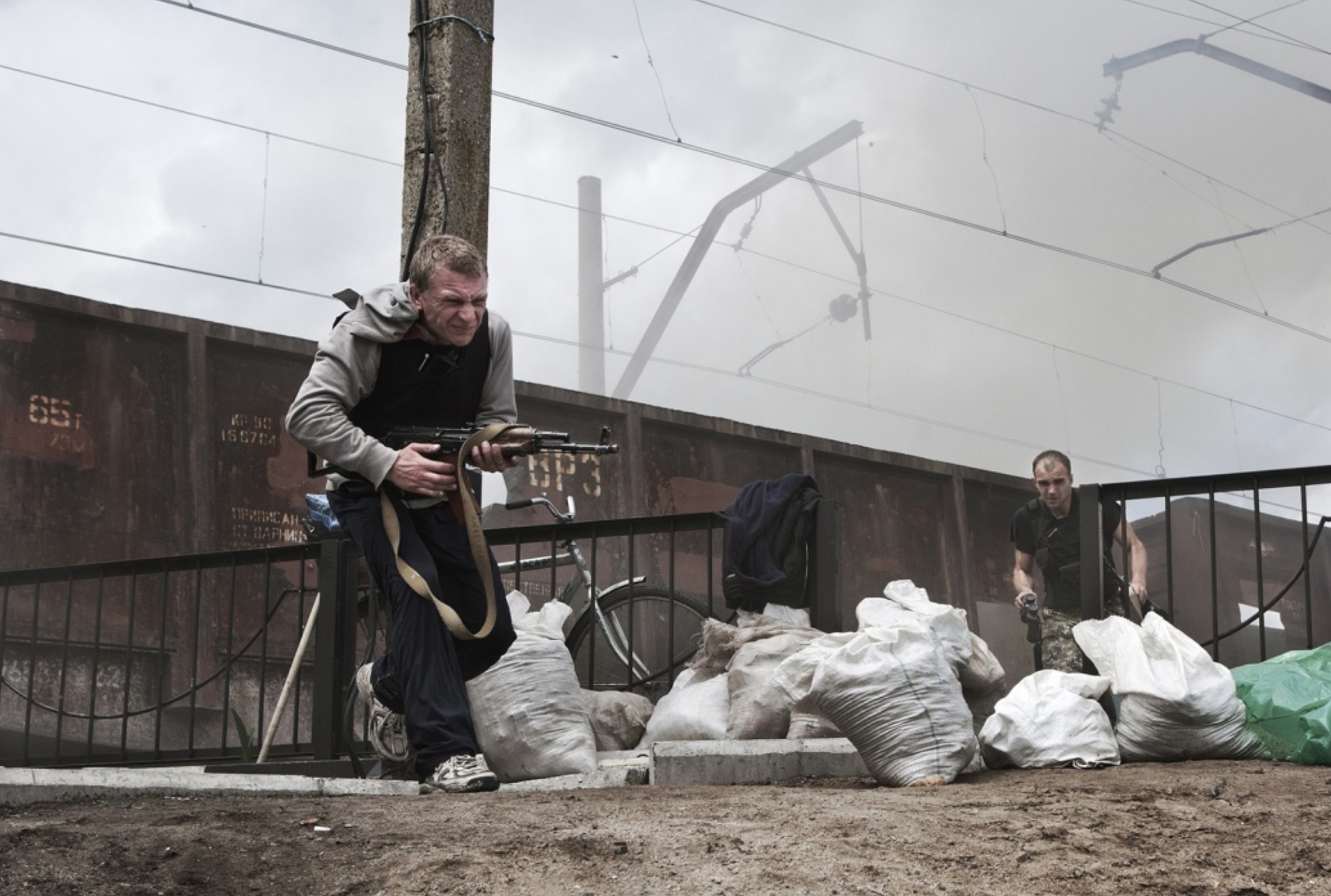“The trouble began in 2014. I had four children, I raised all of them. They were all adults, working. I raised them myself, but in the end, I’m left with nothing...
My sons went to the road and said: ‘What is that pile near the well?’ They went there, and then returned and said: ‘Uncle Ivan is gone.’ There were only pieces lying everywhere. That is how the war started.”
This is how the woman, who fled the village of Shyrokyne in the Donbas five years ago and who now lives in the nearby city of Mariupol, describes the first day of the bombardment of her hometown in the film “Shyrokyne: Swan Song” by Reece Lynch. Later on, there were many such days when the village was under artillery attacks. Out of 1,500 residents, no one remained here on the beautiful seaside.
“Shyrokyne: Swan Song was a difficult documentary for us,” says Reece Lynch who is filming videos for his project First Focus, “not only physically but also emotionally. Despite being just 12km away from Mariupol, the village of Shyrokyne is now a ruin and has been uninhabited by civilians for the last 4 years. After making multiple visits to the village, we decided to reach out and connect with some of the ex-residents. Meeting them, we were able to hear the untold stories from Ukraine's internally displaced people. This is the story of their escape from the village, the relatives they lost, and the struggle of how they live now, struggling to rebuild their lives without proper state assistance.
Read also: UK film director drives to Donbas to film war, spends almost a year there
Internally displaced people in Ukraine today
Overall there are around 1.5 million internally displaced people (IDP) in Ukraine today, some of them left the occupied Crimean peninsula, but most fled the Russia-occupied part of the Donbas region. The heaviest are conditions for pensioners who don’t have close relatives, like the women whom Reece has interviewed for his documentary. Such people have a small pension of 1,700 UAH ($69) and a small additional governmental support for IDP of about $20 per person. This money is enough only to pay for accommodation and a small amount is left for food.
If younger people have more or less adjusted to the new places of living and found new jobs, pensioners have no such possibility.
According to the UN Refugee Agency
, Ukraine is on the 9th place worldwide by the number of Internally displaced people (IDP) — those refugees, who didn’t cross any border but resettled within the country because of war.
Read also: Quarter of Ukrainian IDPs suffer from depression, few get help
As seen on the map below, around half of IDPs (761,000) moved just for a few dozens of kilometers and remained in the same Donetsk or Luhansk oblasts but in the government-controlled towns. Some 150 thousand moved to Kyiv and others to the rest of the country, mostly to the eastern part, closer to their homes.

According to the official report, those who have moved to Kyiv or western and central parts of the country are usually younger and more of them have a new job, while there are more elderly citizens among those who resettled closer to the war zone in the east, and they are less likely to be employed and take care of themselves. These people live under heavy conditions just as women featured in the film.

63% of internally displaced people are renting their apartments. This imposes an additional financial burden on their families. Most Ukrainians live in their own flats or households, saving in that way on the rent and having considerably more money to spend. However, IDPs have lost their homes in the Donbas. Only 12% of them could buy a new apartment within the last 5 years.
Read also: The Ukrainian IDPs who started over from scratch
On the other hand, there are multiple success stories of the internally displaced people, had to adjust to the new environment in new cities, chose to open their businesses and succeeded. It was the case of the bakery in Lviv opened by two sisters Svitlana Lopatina and Oksana Novikova. Although nobody believed in their idea, today their bakery is the most successful in the city district that was considered a “dormitory suburb” before.
As for the women who told their stories in "Shyrokyne: Swan Song," many people who watched the documentary contacted Reece to donate food and money to those featured in the film. He was able to deliver the food and money to several victims of Shyrokyne and managed to organize regular deliveries for them.
Read more:
- Donbas Lost Generation: a journey among the victims of the Russo-Ukrainian War
- Oleksandra Dvoretska: We IDPs have a motivation – to return Crimea and Donbas
- Is the Azov Battalion a terrorist organization as 40 US House Democrats claim?
- Ukraine reveals proof that Russian officers directed rocket attack on Mariupol in 2015
- War veteran opens café in Lviv: “The main thing is not to give up!”
- Mariupol residents protest against demilitarization of Shyrokyne
- The controversial Shyrokyne demilitarization: what you need to know
- The dangers of the Shyrokyne withdrawal
- At the front in Shyrokyne with the Azov regiment – photo report
- Russian invasion caused IDP situation in Ukraine ‘worse than after Chernobyl’












